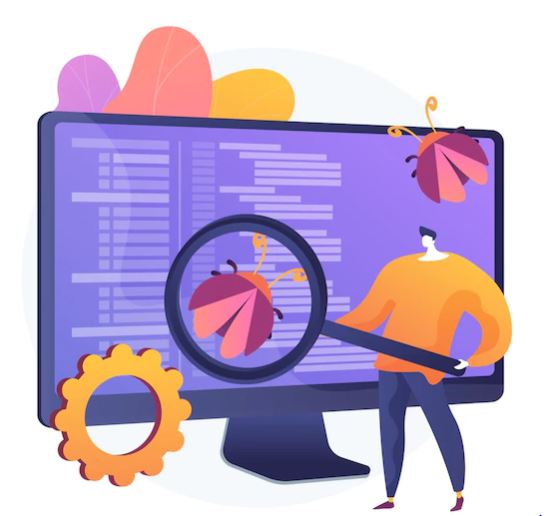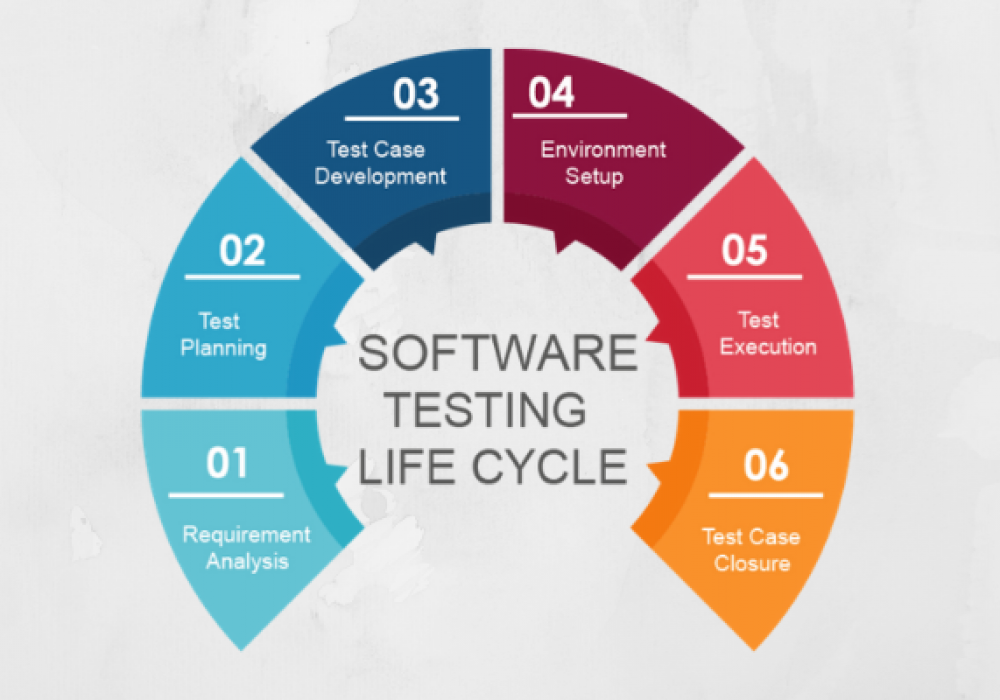Table Of Content
Learn How the Entire STLC Process Works to Provide Error Free Results
Before handing over any software project to the client, it is responsibility of every developer as well as QA engineer to test the application completely. This is crucial because it helps to find out any persisting errors hidden deep inside the program code. This could cause runtime disruption or several performance issues later during the actual software execution. To do this, the QA engineer must need to take the application through a complete Software Testing Lifecycle (STLC). It provides complete analysis of the application on all the given performance standards, allowing developers to become completely sure of its relevant efficiency.
Nowadays, testing processes have become an important part of the actual Software Development Lifecycle (SDLC). According to top experts, no software should be rolled out in the market without getting proper software quality assurance services. It ensures that the software is free from bugs, hence, its performance will not offer any major issue to the clients. This also helps to build the confidence of the developers, as they become more satisfied with the hard work and dedication they have given to the project.
If you are also a developer or QA engineer who is looking to learn about software testing lifecycle, take a detailed look of this article. It has defined all the stages that are involved in a testing process. From initiation to debugging, everything is explained perfectly in the article to help you understand the entire journey of the STLC. Let’s take a look at each process and the real purpose of software testing lifecycle in detail below.
What is Software Testing Lifecycle?

Software Testing Lifecycle (STLC) is basically a step by step process in which a software product is tested at multiple stages with different types of measures. This is precisely done to completely ensure quality in the software projects. As a developer, you would never want to see any failure in your software products after handing them over to the clients. It could not only force you to work again on those projects, but could also derail your reputation in front of the clients.
To avoid getting into this situation, a testing plan has been created to ensure error-less quality in software projects. This process involves multiple stages, starting from test initiation to final code debugging. Generally, the STLC process is executed by experienced professionals. Their fine knowledge towards the intricacies involved in software testing makes them a preferred choice over beginners. That is why it is recommended to always hire expert .NET developers to manage any software project. The beginners working with them can take some good lessons by following their development practices. They can smartly grasp several testing ideas from them to get started on their own in this process.
Without using STLC, any software will be considered prone to errors. It can disrupt the performance of a software, forcing clients to return the project back to the developers. So, to keep these errors at bay, always remember to use the testing techniques of STLC. It precisely works with a proven strategy to produce glitch-free software products, rightly as per the client requirements.
Looking for Experienced QA Engineers?
6 Phases of Software Testing Lifecycle

Software Testing Lifecycle constitutes of different stages. These phases are tasked with a variety of operations as well as their results. Their outcomes are then used by next processes that are standing in line to take the last output. Using them, further operations are executed to optimize the quality of the software applications.
If you do not have much knowledge about software development methodologies and working procedures of STLC phases, take a look at the step by step explanation given below to understand the whole concept properly.
Requirement Analysis
The first thing that marks the start of STLC process is the gathering of crucial testing information. In this phase, the QA team will need to collect information how the software should be tested keeping few benchmarks in mind. It is actually very important to set some goals before starting the testing process, as it helps you to keep track of things perfectly.
The requirements analysis phase will also gather information about the technicalities involved in a project. This will offer better insights to the QA team and developers about the complexities of code testing. They can use this data to prepare Requirement Traceability Matrix (RTM) in a quick span of time. The primary purpose of this RTM document is to verify that the client requirements for testing are fulfilled as per the given demands. This document will also come handy in the other testing stages that will follow one after another in the STLC.
Once completing the analysis, you can quickly make a chart of the required testing operations. This will let you know how testing in each stage would be executed as per given requirements of the project.
Test Planning Phase
The next phase will be responsible to calculate the software testing procedures required in the project. It will let the developers know what type of testing strategy should be picked for the software product. Not only that, but it will also decide how separate elements of the projects should be tested according to the results of every subsequent test. This is often done when different software elements are interrelated with each other.
The connection of these elements through commonly used services makes them prone to get corrupted by any single mistake. Hence, it is important to devise a clear testing strategy for them, so that their hidden errors could be easily detected at the first attempt. A lot of times, developers miss planning this crucial interrelated services test. This creates a lot of problem for them when multiple elements start to show similar errors at the same time. Their lack of testing knowledge does not let them decide how to decode this failure, or plan their tests accordingly.
It is therefore advised to create a failsafe testing plan first. This will allow you to take forward the whole STLC process correctly as per the best testing practices.
Test Case Development
Now that you have created a testing plan for the overall process, let’s move towards building separate test cases for each stage. It is quite obvious that every phase will require different types of testing procedures due to the unique challenges involved in them. These test cases are developed by looking at the intricacies of each part. It would gradually become advanced because the depth of testing will start to increase as the STLC process will move towards the final project testing stages.
As a QA engineer, you will need to create and verify various testing scripts for different application features in this phase, for which you can choose from a variety of software testing tools on the market right now. It would require a detailed technical knowledge about the application and all its functions. Knowing them will help you to create exact test cases for each part according to the best practices. Make sure to obtain correct data before starting building test cases, as it will certainly play a huge role here. Initially, you could create test cases for the available conditions, but do remember to modify them for the testing purposes of future data.
Once created, you have to review them all according to the given baseline. This will ensure that all the cases have been developed correctly and now you can move towards setting up the real testing environment.
Environment Setup
Coming to the next phase, you now have to setup an environment that could help to complete all the test cases efficiently. Basically, it refers to decide what type of software and hardware should be used to execute the given test cases. Just like appropriate .NET development tools, the selection of right testing software is also very important because a lot of things are dependent on it. Being a QA engineer, you should have sound knowledge of every software testing application. If you don’t have the required expertise, acquire them first by learning through the right sources available on the web.
Generally, the development team helps the testing team to setup this environment. They collaborate with each other to decide what will suit best for the test procedures. Once the environment is ready, the testing team can do a readiness test (smoke test) to check the precision of the setup. This can be done by executing some sample tests on dummy applications or coding programs that provides a good match with the actual software.
Once you are satisfied with the environment, start gathering your tools to move towards the next phase in which you will be executing the exact test cases prepared above.
Test Execution
Now, it is time to start the actual test execution on the required software components. This would be done by using the test cases that were earlier prepared in the STLC process. You will start implementing them gradually, so that every result can be analyzed properly. The ideal way to do that is by using the pipeline strategy in which you will be executing the tests one by one. This will allow you to analyze every outcome before passing them over to the next testing phase.
The process of testing will include different types of script execution according to the given requirements. It will give you variety of results including software health, hidden code bugs, performance figures and more others. You will then analyze them to plan future actions required in the upcoming testing phases. Make sure to complete your analysis on each result perfectly, because all the forthcoming software components testing are dependent on them.
Once you have executed all the tests, start documenting their results into a separate file. It is up to you to choose the excel or word file for this documentation. This will come handy in building a complete test report to close out the process with satisfaction.
Test Closure
After completing all the tests, now you have to pay attention towards the final report obtained. This will serve as an analysis of your entire process as well as the current state of the software. Ideally, this report should be very clean, free from all types of errors and loopholes, checking to see if the software project requirements are developed and implemented successfully. If somehow, anything looks disturbing in the report, go towards the debugging process to rectify it properly. This will be an entire new process in which you will be resolving the underlying errors reported in the recent document.
Meanwhile, the completion of software testing report will also help you to learn some lessons for the future. It will serve as an example to plan other software testing activities, especially for those who are just starting to learn the STLC process.
Final Words
That concludes our entire article in which we have discussed different phases involved in a software testing lifecycle. These stages should be understood properly because they have play an important role in building a complete testing plan. Each of these phases are designed to carry out different types of testing processes. As a QA engineer, you need to understand the dynamics of every phase to achieve complete efficiency at the end of the software testing lifecycle.
This article has illustrated all the important stages involved in an STLC process. If you are just starting your career as a QA analyst, you must need to master the objectives of each of these phases. This will help you to plan the operations for every stage precisely, rightly according to the standard software testing demands.
Meanwhile, if you are looking for a software outsourcing company that offers top-notch software quality assurance services, contact us today. We provide trusted and in-depth QA services that helps to evaluate every component of your software as per the required functional efficiency.
You might also be interested in knowing more about software testing types here.
Frequently Asked Questions (FAQs)
| What is meant by software testing process? Software testing process ensures to check software products for the possible loopholes. This process helps to find out the underlying errors that could later disrupt the performance of a software application. |
| What is software testing lifecycle (STLC)? Software testing lifecycle is a complete plan that helps to evaluate any software from start to finish. It involves different types of stages that helps to perform variety of testing checks one by one in a sequential manner. |
| Why is it important to understand STLC process? STLC process should be understood properly by every QA engineer. It provides great information about how the whole testing lifecycle works. It could help you to perform QA tests at an advanced level, rightly as per the modern standards. |
| How many types of testing tools are available in the market? There are different types of testing tools available in the market. Some of them offer only testing results, while some are made more advanced to carry out different types of debugging operations. |
| What are the 6 stages of software testing lifecycle? Software testing lifecycle involves 6 different stages to perform variety of testing checks. These phase include requirements analysis, test planning, test case development, environment setup, test case execution and final process closure. |
Empower your digital initiatives with BariTechSol, a premier custom software development company. Our skilled team tailors cutting-edge solutions to your unique needs. Elevate your tech experience and stay ahead in the digital realm. Partner with BaritechSol and code the success of your next big idea.


